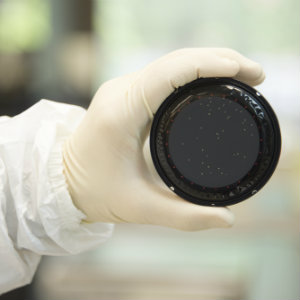blog
September 4, 2014 | Source: Rapid Micro Biosystems, Inc.
How to Perform Faster, Effective Out-of Specification Investigations
POSTED BY Rapid Micro Biosystems | 4 minute read
September 4, 2014 | Source: Rapid Micro Biosystems, Inc.
POSTED BY Rapid Micro Biosystems | 4 minute read
 Rapid Micro Biosystems has had the opportunity to speak with industry experts on a variety of topics of particular interest to the QC microbiology lab. In the next few posts we’ll be sharing their insight and thoughts on these topics. The first of these concerns is out of specification Investigations.
Rapid Micro Biosystems has had the opportunity to speak with industry experts on a variety of topics of particular interest to the QC microbiology lab. In the next few posts we’ll be sharing their insight and thoughts on these topics. The first of these concerns is out of specification Investigations.
Even the most well run and efficient pharmaceutical manufacturers will have Out-Of-Specification (OOS) investigations, and, for some manufacturers, the costs of these can reach the hundreds of thousands per year. While some OOS investigations uncover training and handling issues, the possibilities of in-lab and in-process contamination require quality control personnel to perform their due diligence every time a sample indicates an unacceptable level of microbial growth.
However, there are a few ways QC departments can potentially streamline their investigation processes and allow for faster, more targeted testing of possible problem areas. The following are a few effective ways that successful QC teams have found can improve their OOS practices and policies.
In many cases, the microbiologists who performed a given set of tests won't be the ones carrying out the related investigation. If their supervisors or other QC personnel are performing the investigations, microbiologists can accelerate the process by organizing and preparing all of the related documentation – including test results from the same problem area when available. Better coordination and faster investigations ultimately benefits everyone involved, as the microbiologists themselves may need to spend additional time on re-tests or follow-up tests depending on the findings of an investigation.
Thorough documentation of current and past tests is also essential to efficient investigations, particularly in instances where the investigators are not working as microbiologists themselves. They should be able to quickly see which products, environments or water samples have registered OOS levels of growth, and to what degrees those growths exceeded acceptable limits. Identification of the contaminant helps the investigation.
Just as importantly, similar data from prior tests can help investigators make informed decisions regarding the most important areas of a lab or production line to test. First-time problem areas warrant investigations or corrective actions, but recurring incidents could necessitate further investigation to keep problems under control.
Even when well-documented tests and thorough records point to a particular course of action, some companies' policies require what may turn out to be excessive or unnecessary testing of multiple problem areas. One of the best ways to correct this problem and provide for more targeted – and potentially cheaper – investigations is to establish pre-set risk assessments, flow charts and decision trees for investigators. Instead of being bound by rigid requirements, investigators can then leverage the data from their micro labs to focus most of their time and attention on the most likely causes of concern.
Automated, growth-based rapid microbial methods make it easier to report colony counts, communicate results and ultimately help determine the cause of an out-of-specification result. Automation also increases the likelihood that any OOS reading is truly a problem worthy of investigation—and not simply the result of a testing error. To learn more about the benefits of automation, download this free guide today.